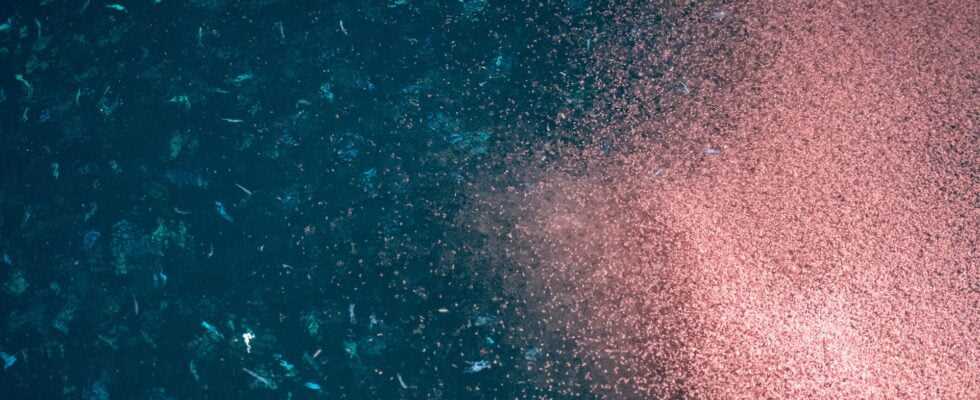Even the weak are strong together, and so many animals band together in swarms so that they don’t go through life alone. The individual members of the group then save energy, for example, and can better protect themselves from enemies. Much research has been done, but it is not entirely clear how small animals gather in large swarms, how they coordinate and when swarms break up. A research group led by Ashley Ward from the University of Sydney has now investigated these questions – using the example of krill swarms, the huge groups of small crabs that are an important basis of the ecosystem in the polar sea.
In the journal Biology Letters, the team reports on the results of extremely complex 3D scans of an artificial swarm. The scientists had the movement of 3000 to 4000 individual individuals of Antarctic krill (Euphausia superba) analyzed and tracked, which they had previously fished out of the polar sea and released again in a large tank facility. From the data, they then drew conclusions about the rules that each crab in a swarm follows and how this results in a specific collective swarming behavior.
First of all, the researchers found that the swarms do not simply arise because they are guided by ocean currents or because many animals gather where there is a greater supply of food. Instead, the individual crabs clearly orientate themselves towards conspecifics, which they initially come close to by chance. Now a kind of automated pas de deux begins, which soon becomes multi-headed: you focus on a neighboring crab and then constantly keep a distance of around two and a half to five body lengths from it. At the same time, they can also be focused and mirrored by other conspecifics – which coordinates the behavior of the emerging swarm.
